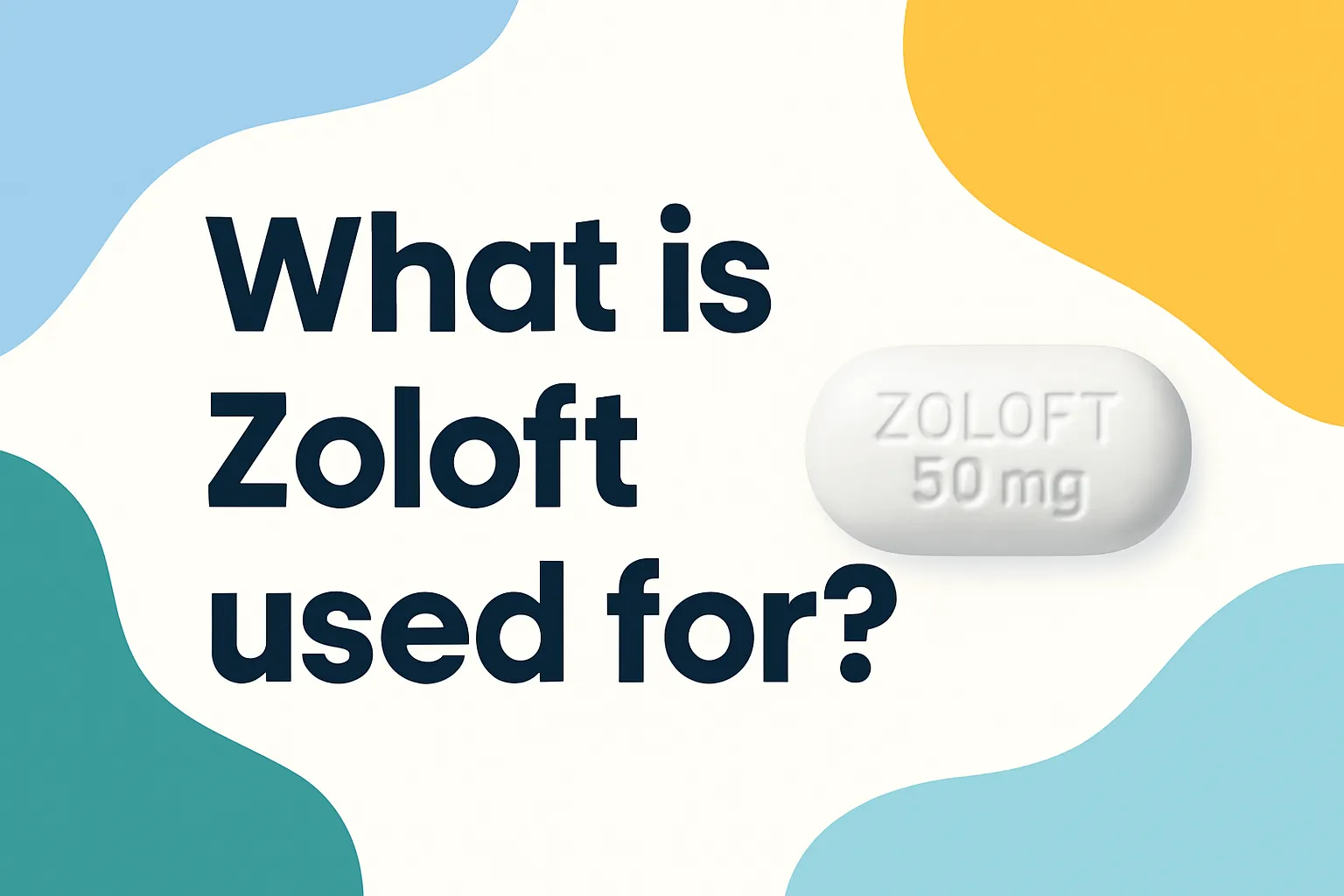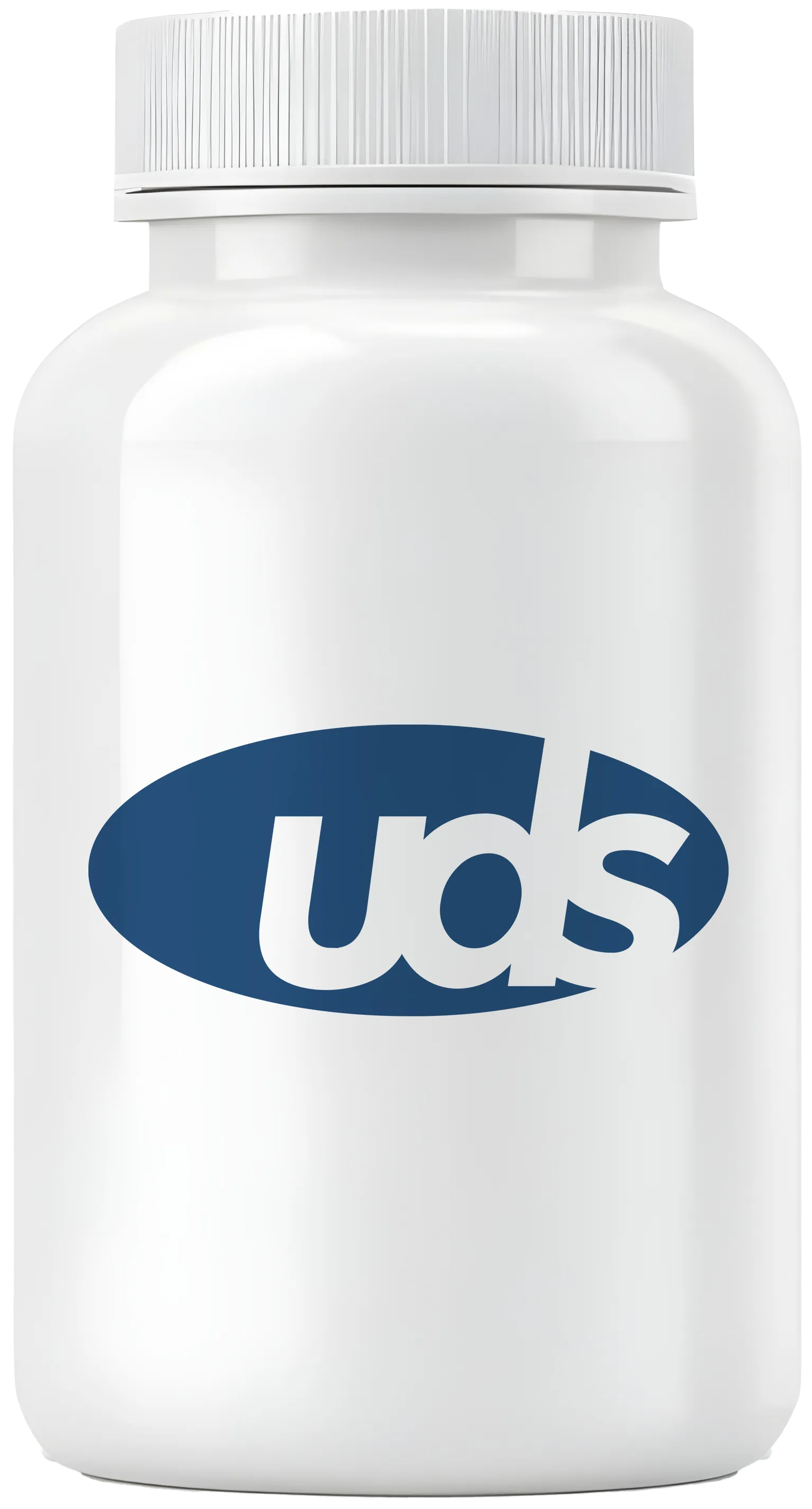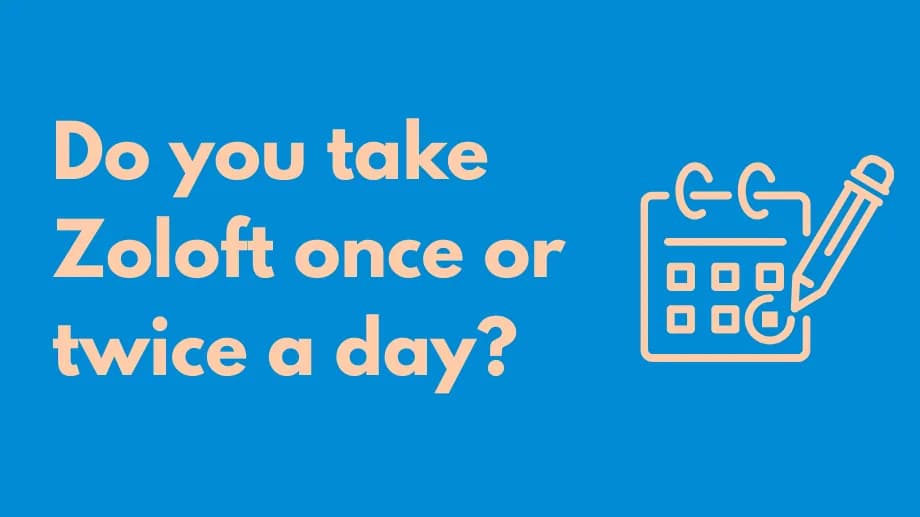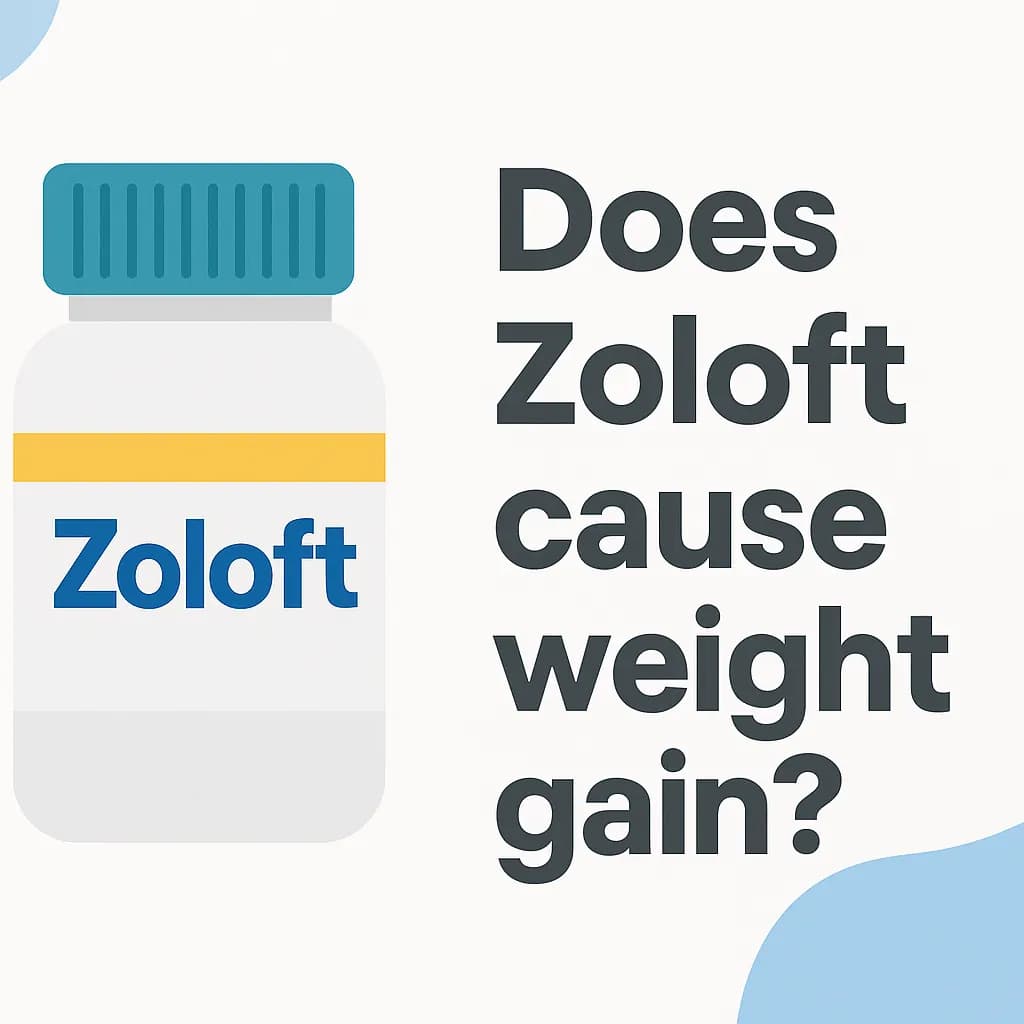What is Zoloft used for?

Zoloft (sertraline) is a brand-name antidepressant that belongs to a group of drugs called selective serotonin reuptake inhibitors (SSRIs). It works by increasing the serotonin levels in your brain to treat certain mental health conditions such as:
- Major depressive disorder (MDD): MDD, also called clinical depression, can cause a persistent low mood and affect how you feel, think, and behave. Symptoms may include sadness, low energy, loss of interest in activities, sleep changes, anxiety, and thoughts of self-harm. The typical starting dose is 50 mg once daily, increasing up to 200 mg daily if needed.
- Obsessive-compulsive disorder (OCD): OCD causes intrusive thoughts (obsessions) and repetitive behaviors (compulsions). Starting dose is 50 mg once daily for adults and teens (13–17 years), and 25 mg once daily for children (6–12 years), increasing up to 200 mg. Oral solution must be mixed with specific drinks and taken immediately.
- Panic disorder (PD): PD causes recurring panic attacks with physical symptoms like sweating, shortness of breath, and rapid heart rate. Starting dose is 25 mg once daily, increasing up to 200 mg daily if needed.
- Post-traumatic stress disorder (PTSD): PTSD occurs after traumatic events and may cause flashbacks, nightmares, and mood changes. Starting dose is 25 mg once daily, increasing up to 200 mg daily.
- Premenstrual dysphoric disorder (PMDD): PMDD is a severe form of PMS with mood swings, fatigue, and irritability. Starting dose is 50 mg daily. Taken daily or only during symptom periods. Max dose: 150 mg (daily use), 100 mg (intermittent use).
- Social anxiety disorder (SAD): SAD causes extreme anxiety in social settings. Starting dose is 25 mg once daily, increasing up to 200 mg daily.
What are the side effects of Zoloft?
The most common side effects of Zoloft include:
- Nausea
- Diarrhea
- Trouble sleeping
- Dry mouth
- Indigestion
- Tiredness or drowsiness
Other less serious side effects may include:
- Irregular heartbeat
- Loss of appetite
- Changes in vision
- Tremor
- Sexual problems
- Sweating
Rare but serious side effects include:
- Allergic reactions
- Worsening depression or suicidal thoughts
- Serotonin syndrome
- Increased risk of bleeding
- Glaucoma
- Abnormal heart rhythm
- Low blood sodium levels
In children and teens, additional side effects may include:
- Increased muscle movement or agitation
- Nose bleeds
- Urinary incontinence
- Aggression
- Slowed growth
- Weight changes
These are not all possible side effects. Talk to your provider and read the Medication Guide with your prescription. Report side effects to the FDA at www.fda.gov/medwatch or call 1-800-FDA-1088.
Shop Medications
Are there drug interactions with Zoloft?
Always inform your provider of all medications or supplements you take. Zoloft may interact with:
- Other SSRIs (e.g., Celexa, Prozac)
- SNRIs (e.g., Cymbalta, Effexor)
- MAOIs
- Tricyclic antidepressants (e.g., Pamelor)
- Triptans for migraines
- Opioids (e.g., fentanyl, tramadol)
- Tryptophan
- St. John’s Wort
- Amphetamines
- Lithium
- Buspirone
- NSAIDs (e.g., ibuprofen, naproxen)
- Aspirin
- Anticoagulants (e.g., warfarin, clopidogrel)
- QT-prolonging medications (e.g., amiodarone, pimozide)
- Seizure meds (e.g., carbamazepine, valproic acid)
- Substances causing drowsiness (e.g., alcohol, marijuana)
- Disulfiram (Antabuse) – avoid with oral solution due to alcohol content
Who should not take Zoloft?
- If taking or recently took an MAOI
- If taking Orap (pimozide)
- If allergic to sertraline or inactive ingredients
- If taking disulfiram and using the oral solution
What should you tell your healthcare provider before taking Zoloft?
- Liver, heart, or kidney problems
- History of seizures or convulsions
- Bipolar disorder or mania
- Low blood sodium levels
- History of stroke
- High blood pressure
- History of bleeding problems
- If pregnant or planning pregnancy
- If breastfeeding
How long does it take Zoloft to start working?
Zoloft must be taken daily. Most people begin to feel improvement within 2 weeks, but it may take up to 2 months or more to feel the full effects. Once it starts working, you may feel more relaxed, have more energy, and notice an improved appetite.
Related Medications
- Prozac (fluoxetine)
- Paxil (paroxetine)
- Celexa (citalopram)
- Pristiq (desvenlafaxine)
- Effexor XR (venlafaxine ER)
- Lexapro (escitalopram)
Sources
- Zoloft (sertraline hydrochloride) tablets and oral solution. U.S. FDA. Accessed July 10, 2024.
- Sertraline (Rx). Medscape. Accessed July 10, 2024.
- APA Clinical Practice Guide. American Psychological Association. Accessed July 10, 2024.
- Singh HK, Saadabadi A. Sertraline. StatPearls. Accessed July 10, 2024.
- National Alliance on Mental Illness. Accessed July 10, 2024.








